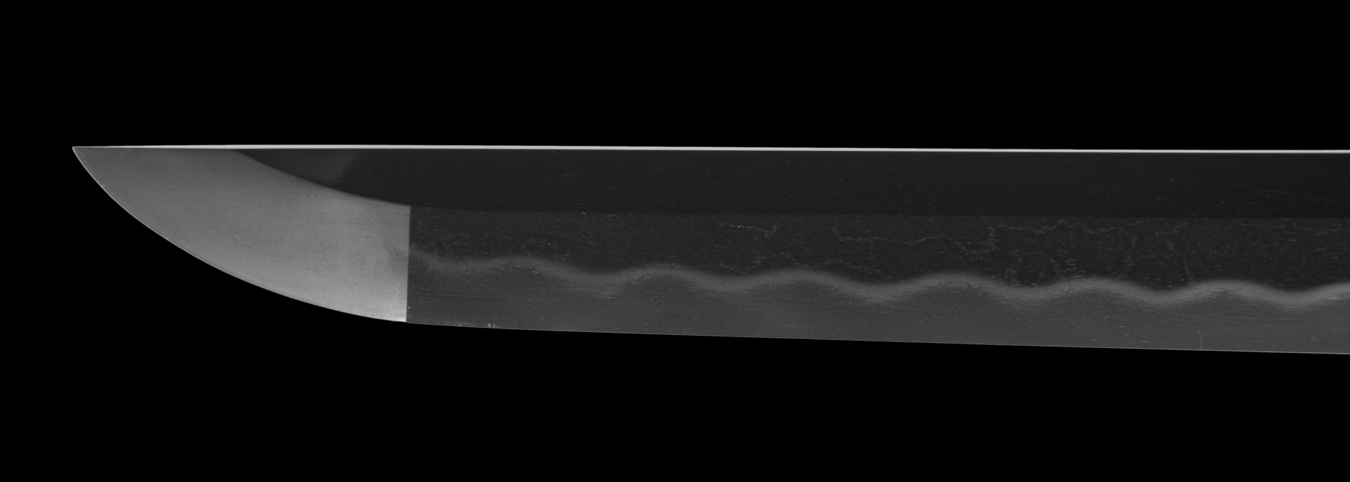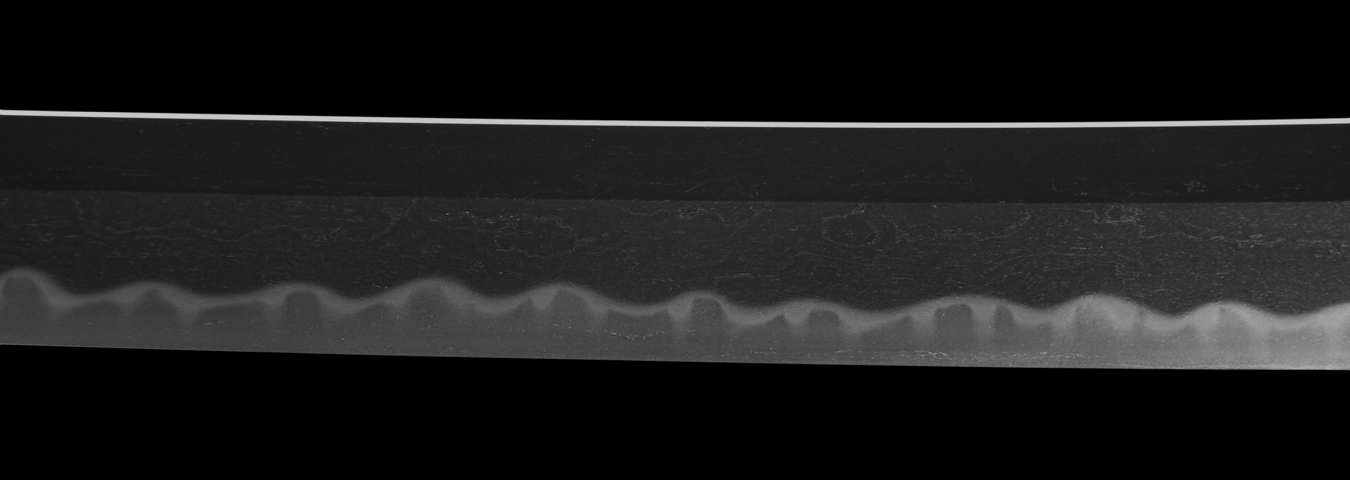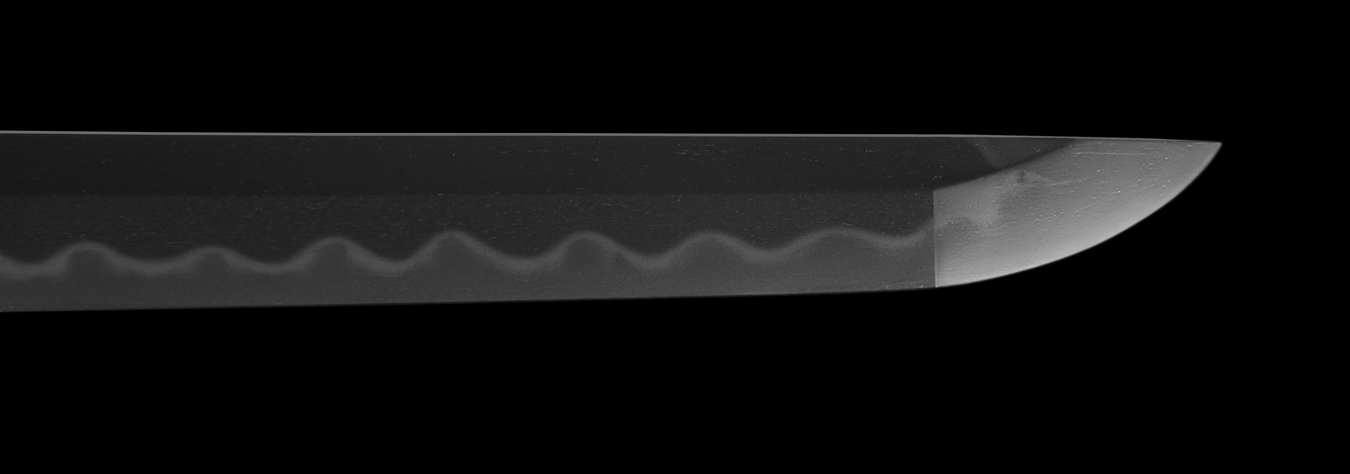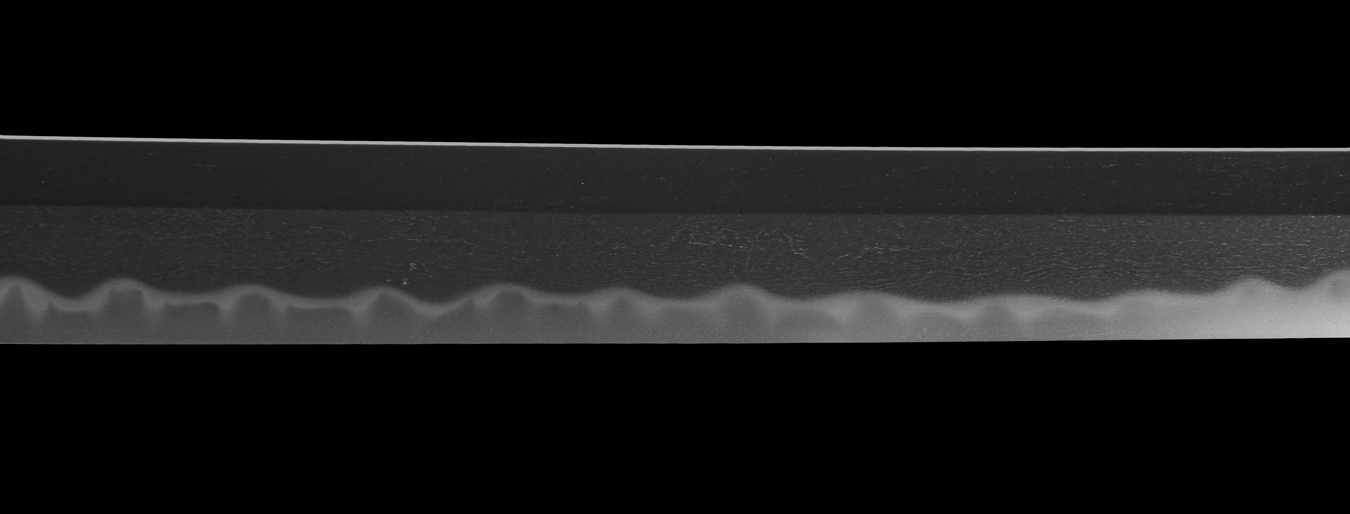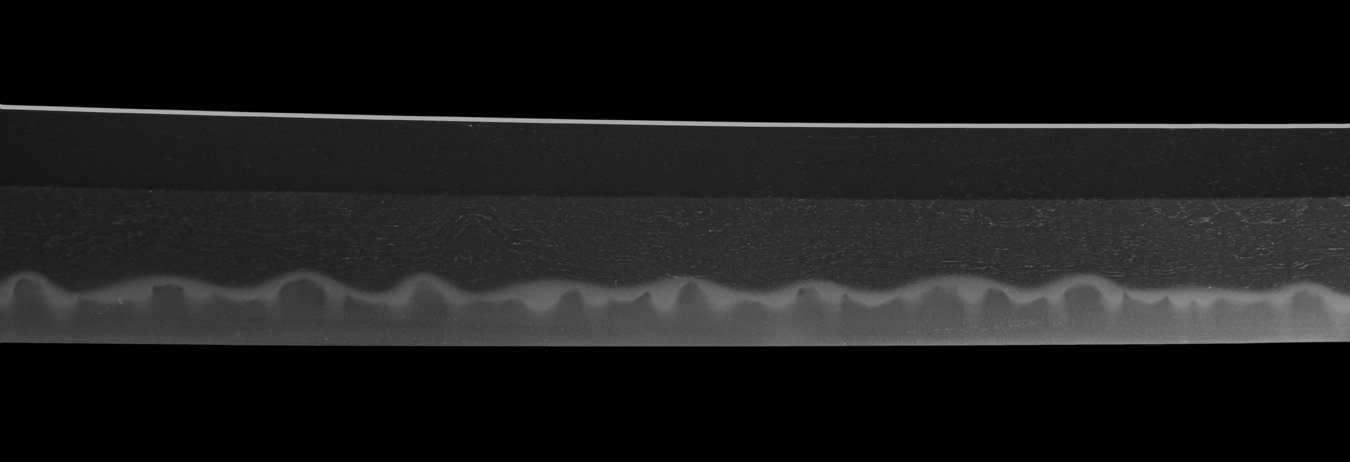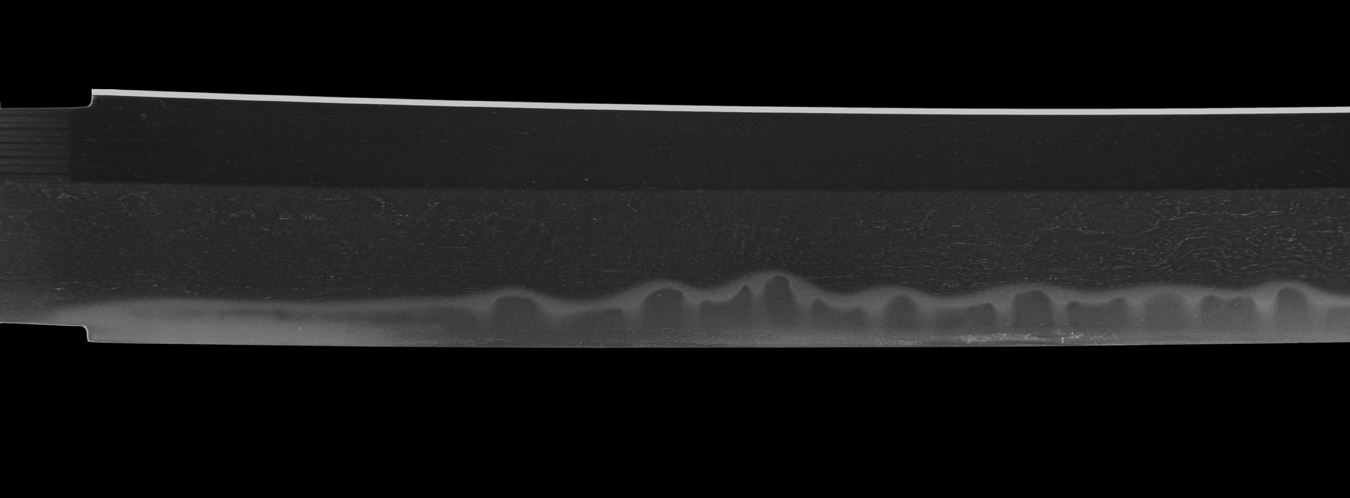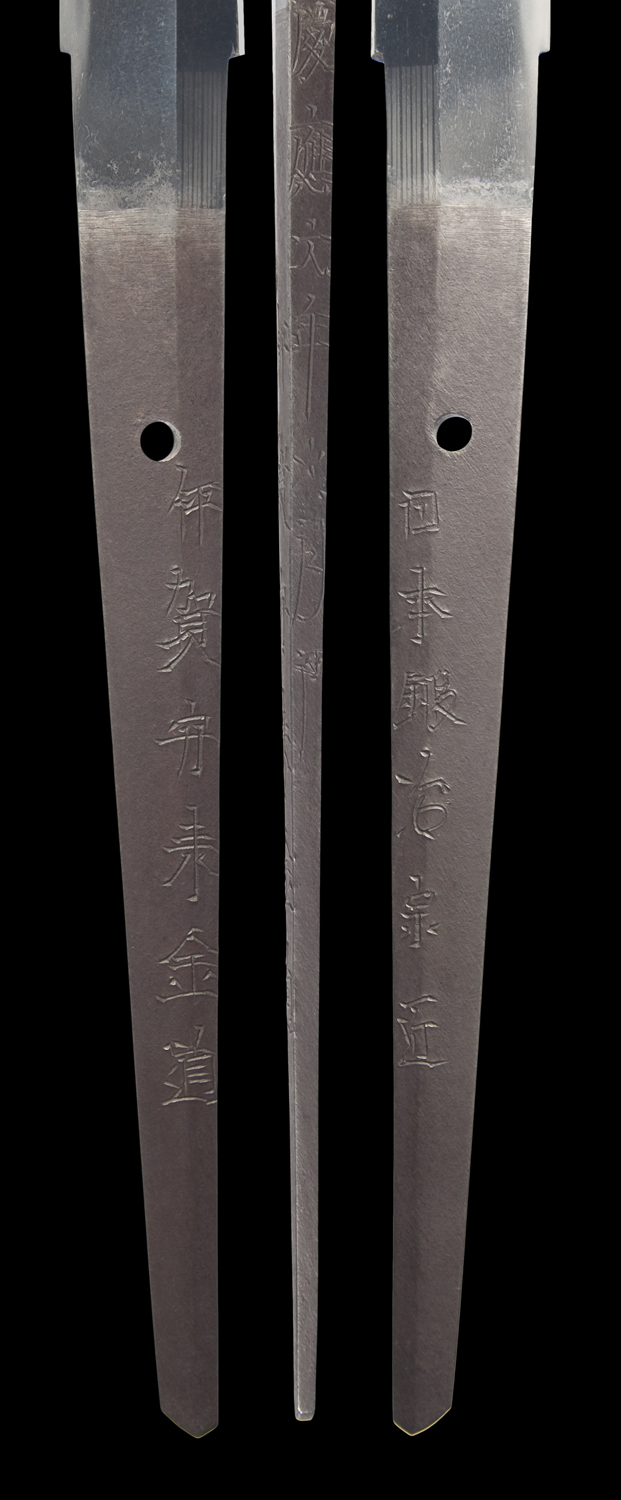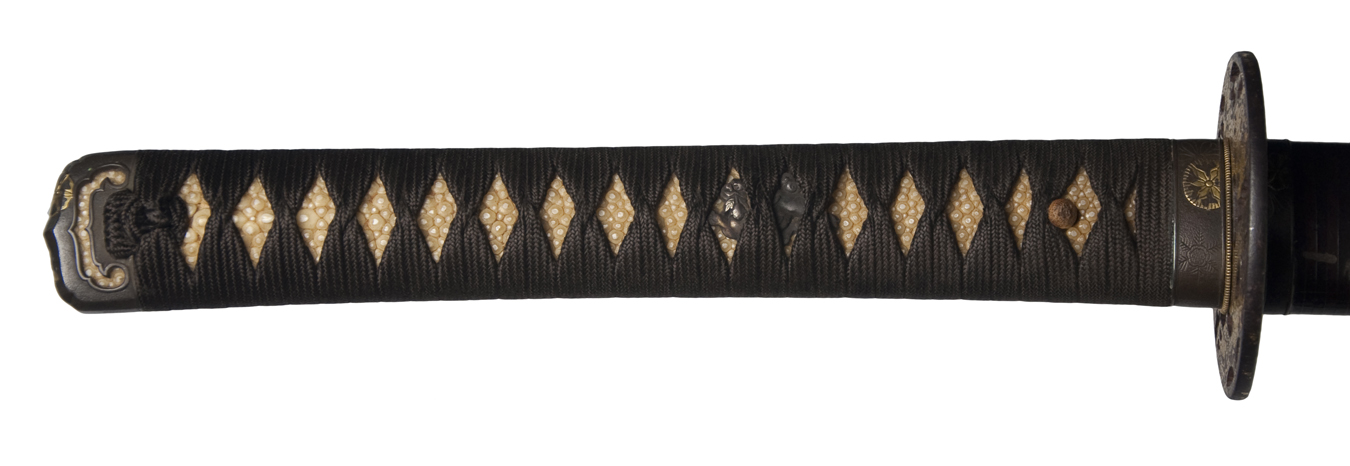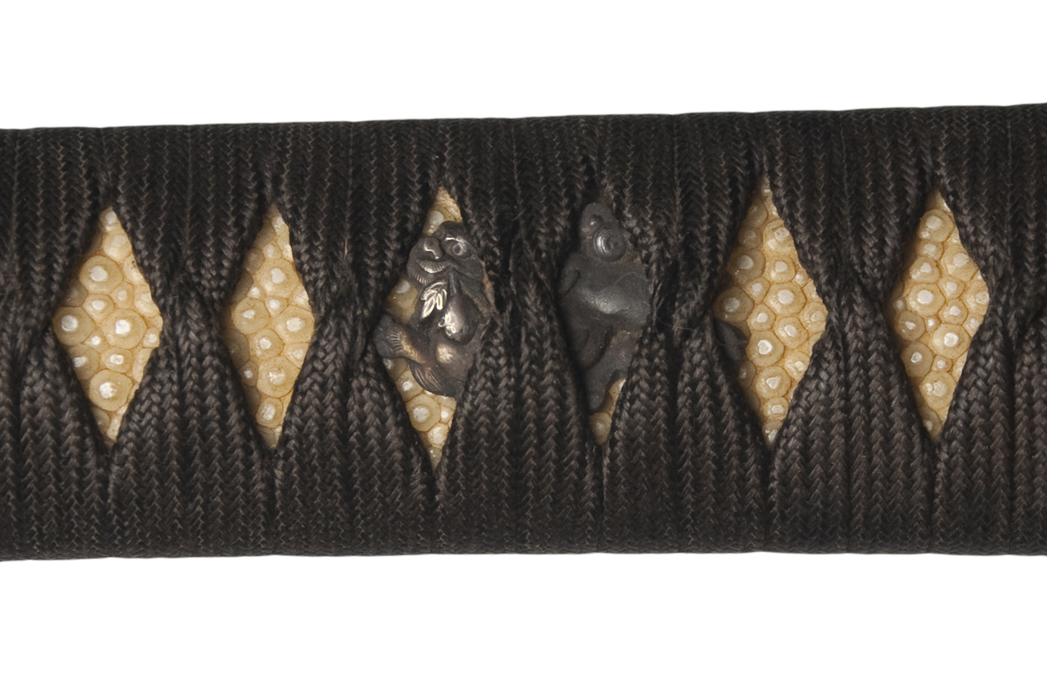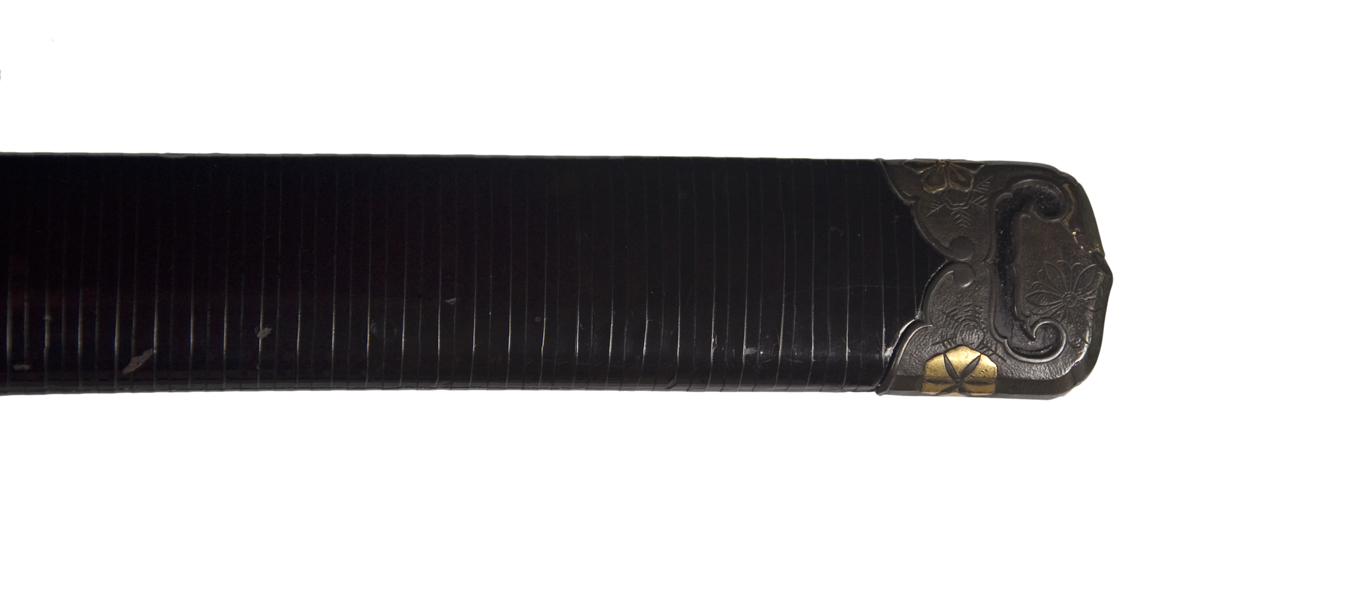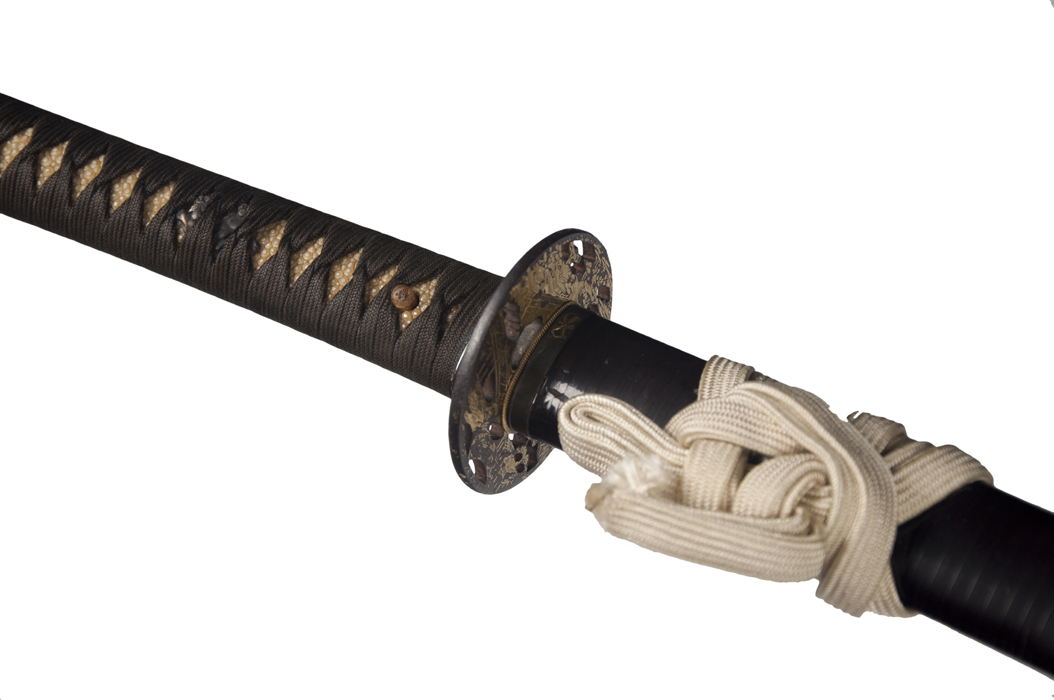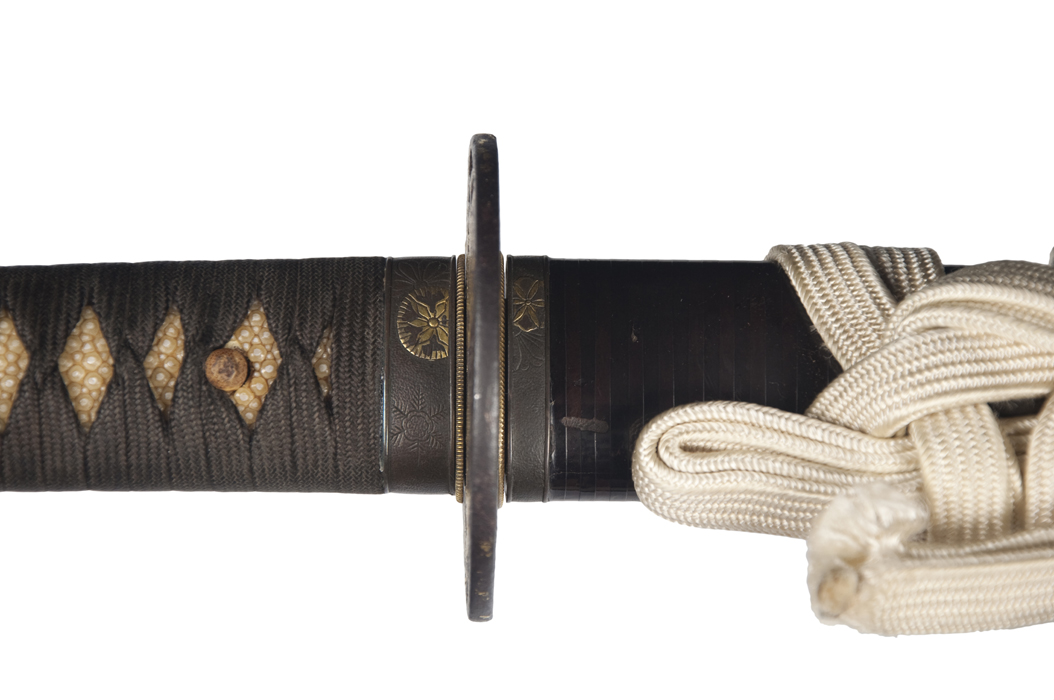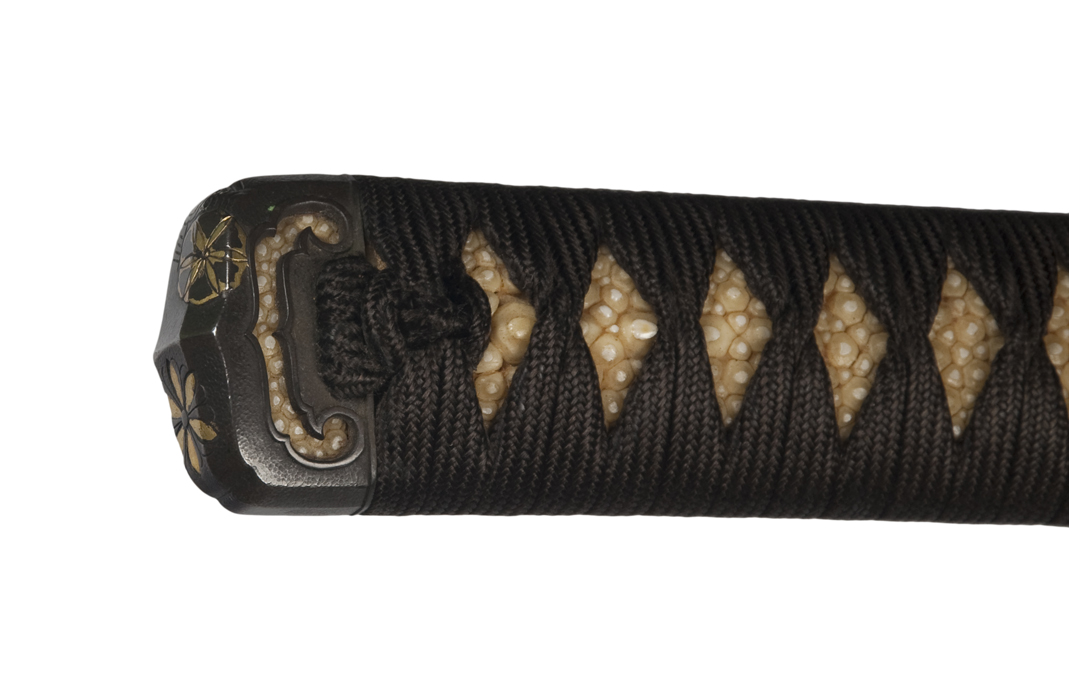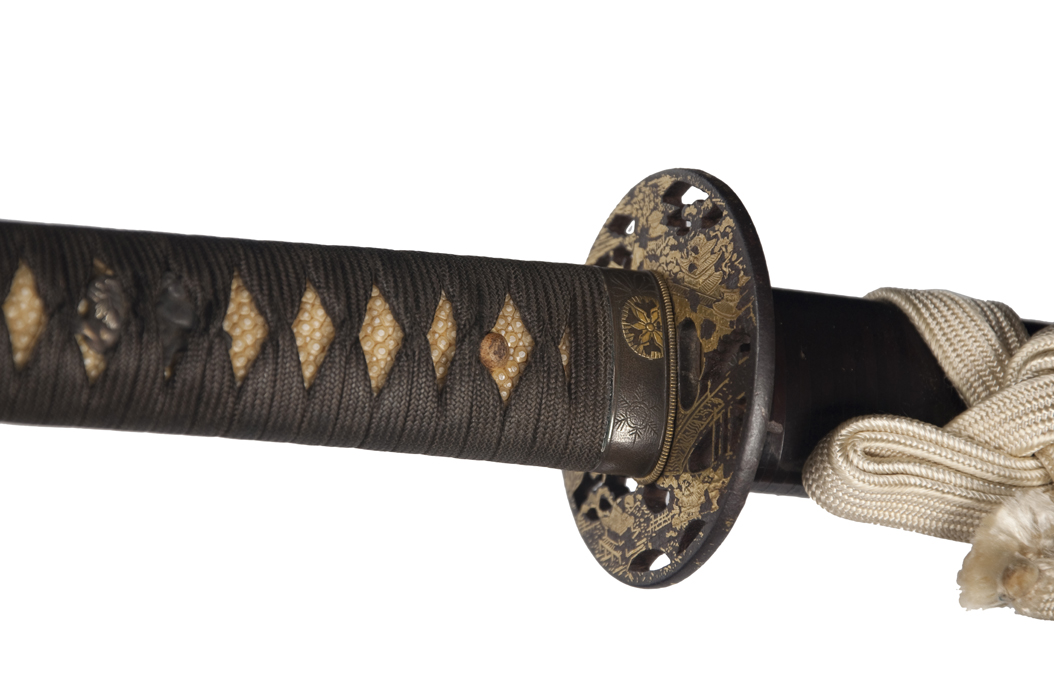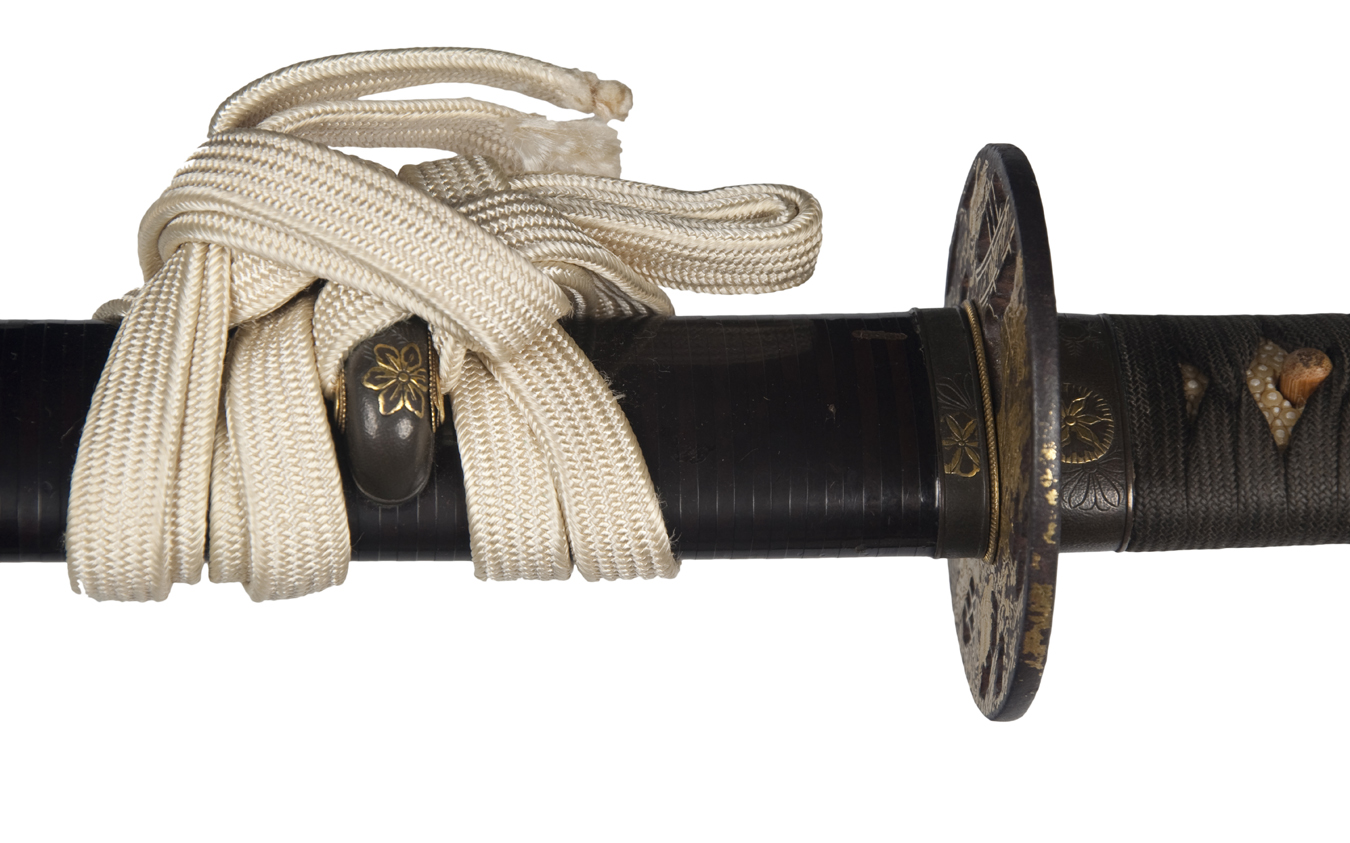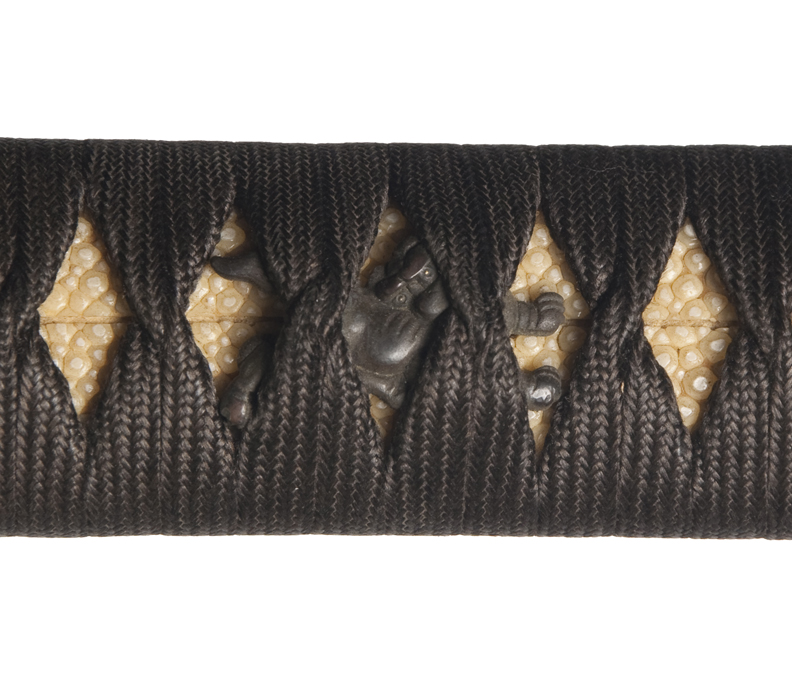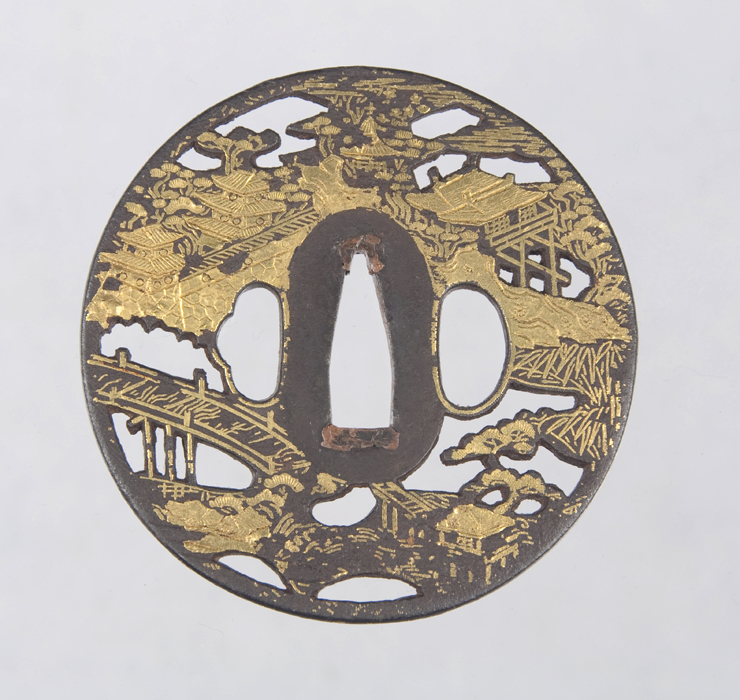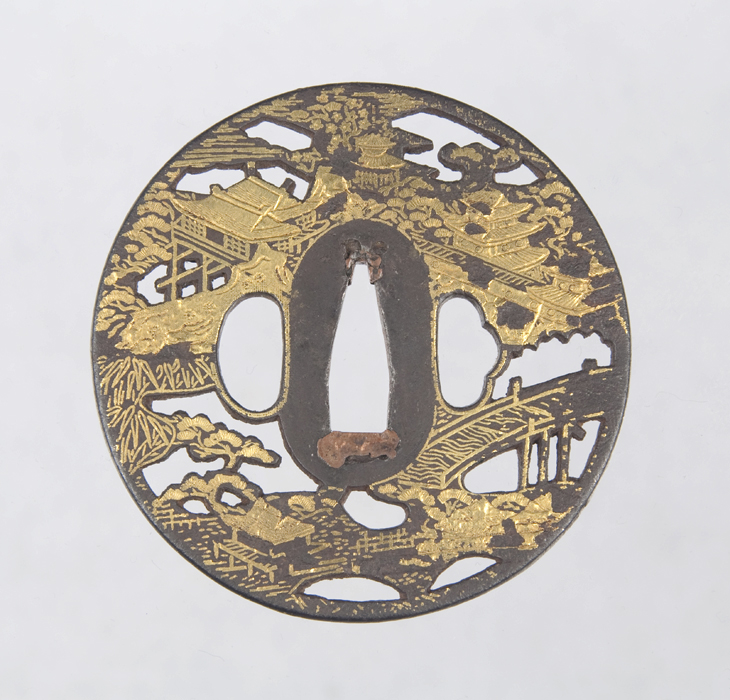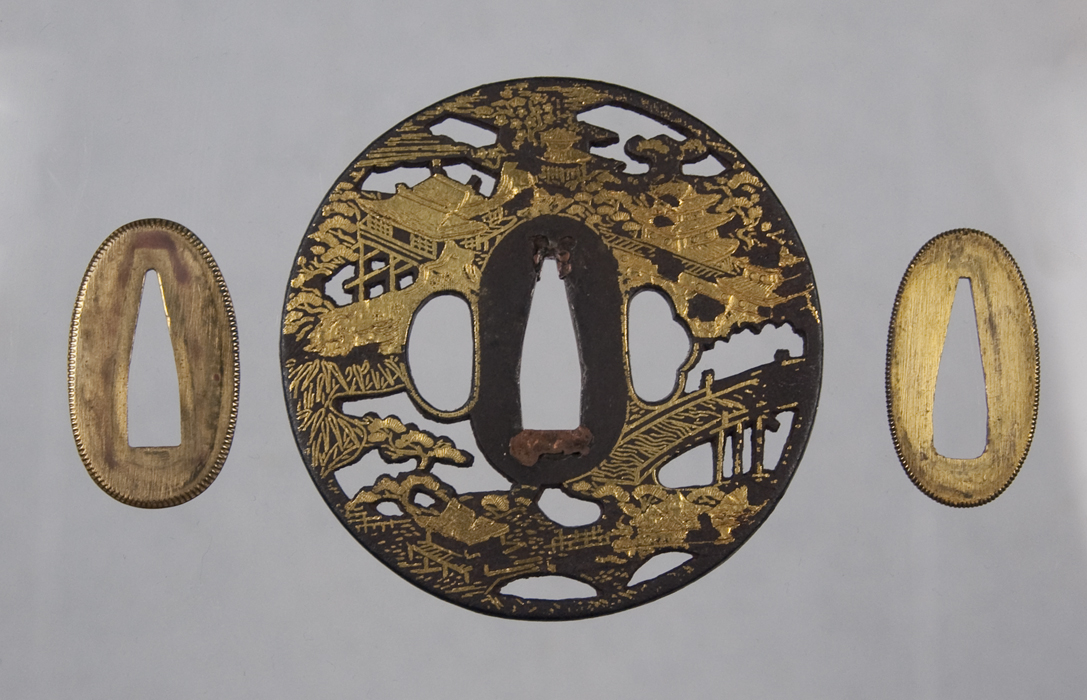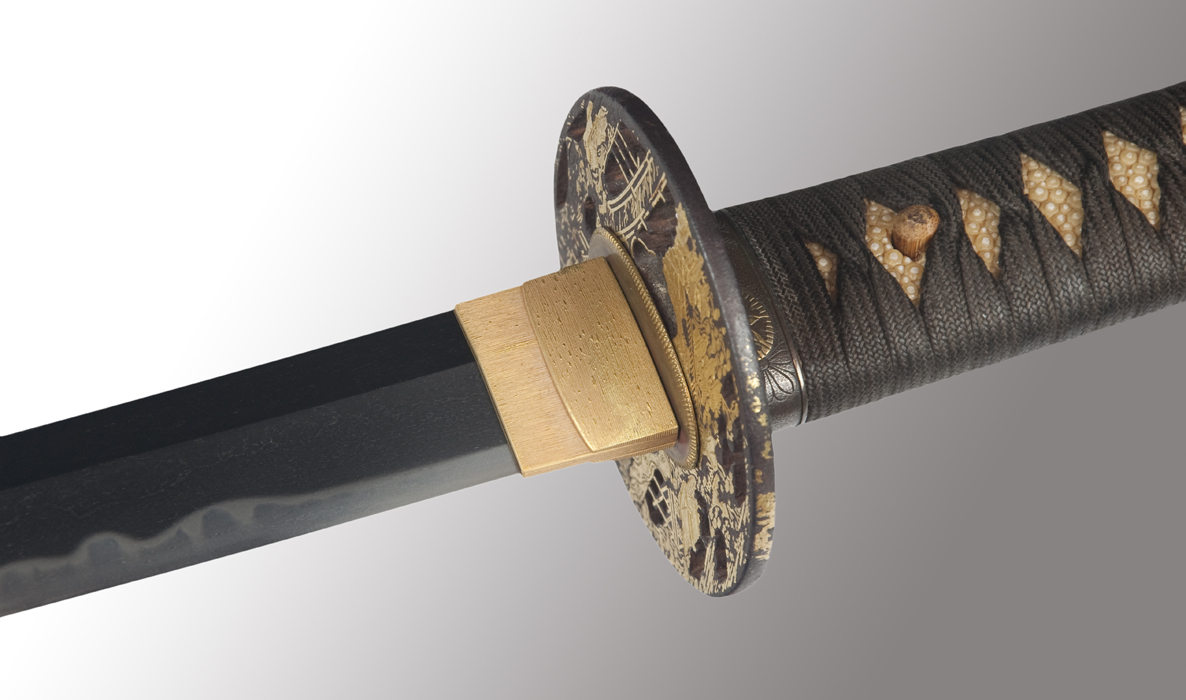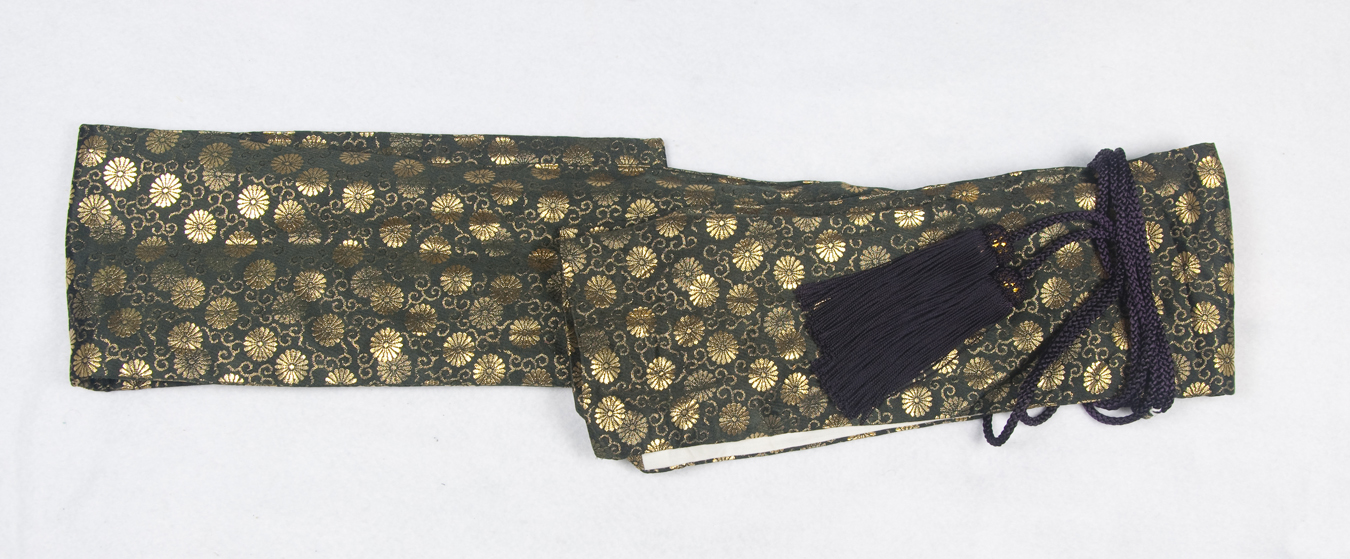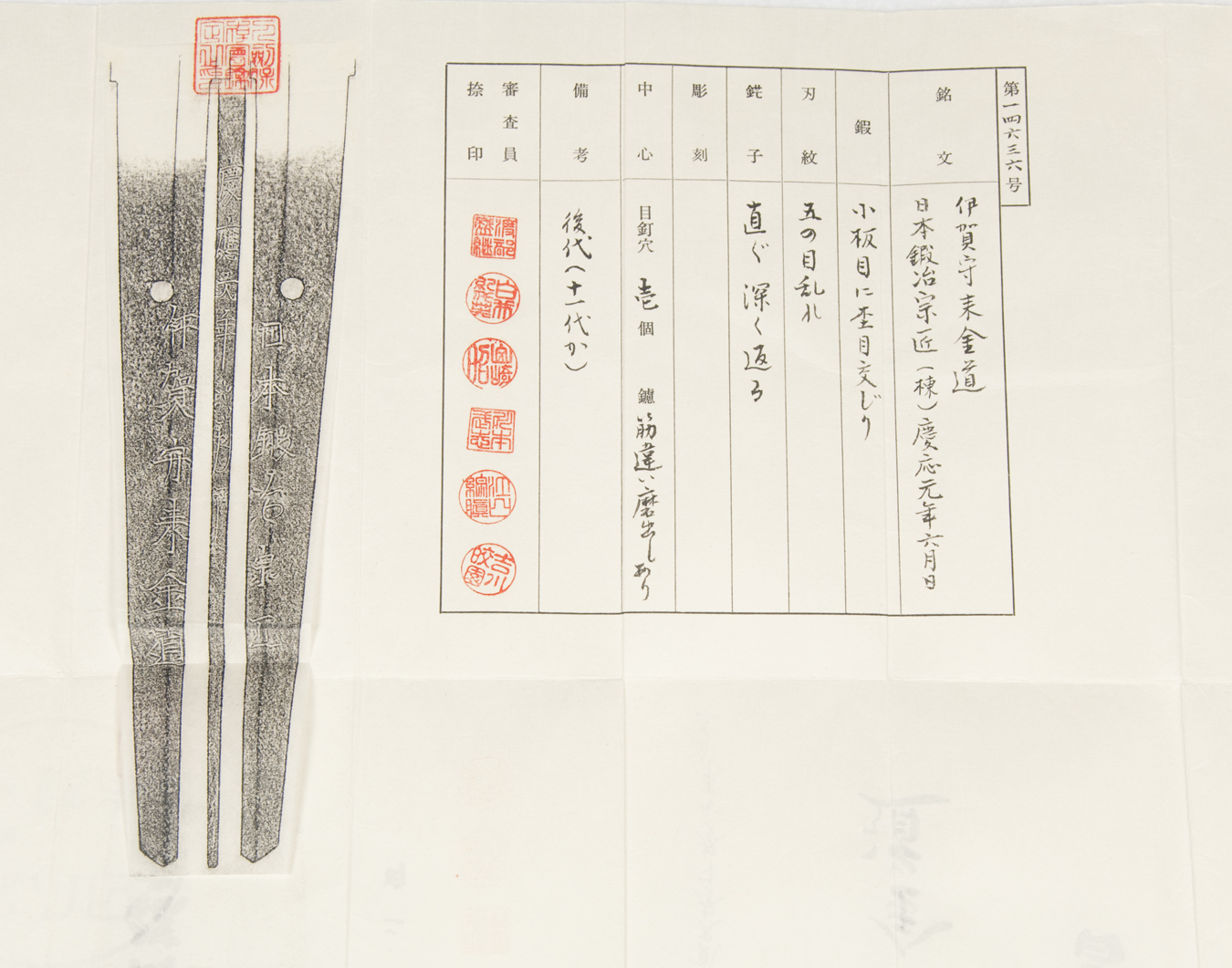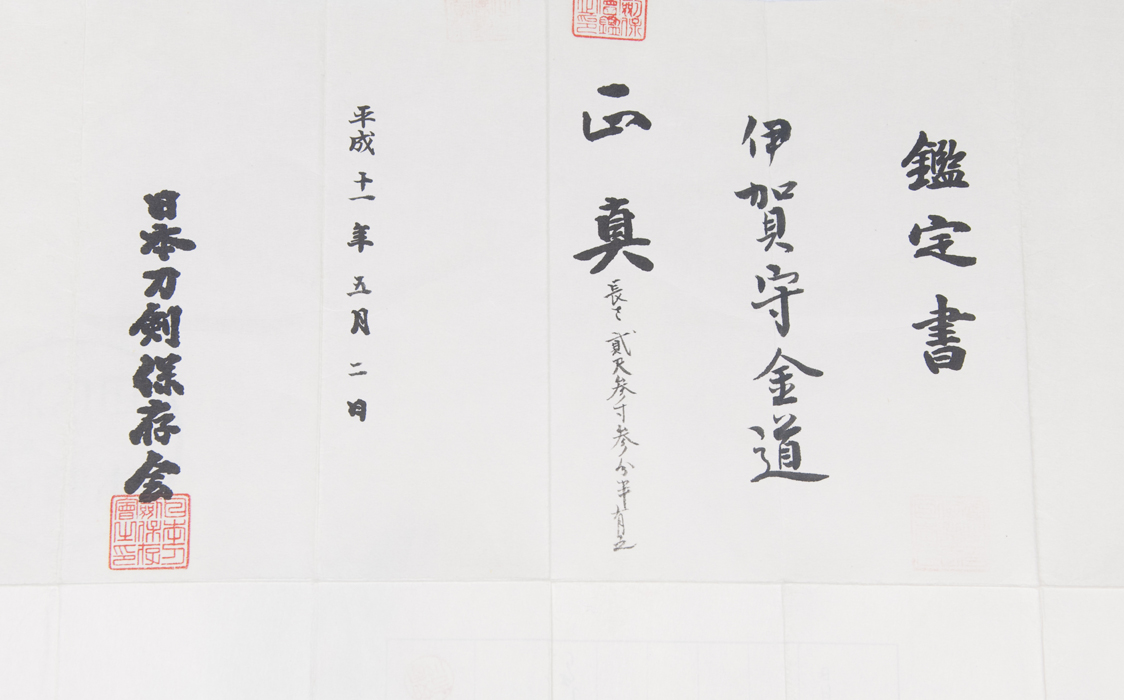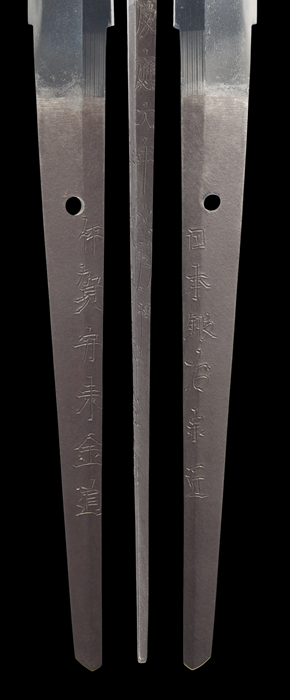|
| |||||||||||||||||||||||||||||||||||||||||||
Hamon : Nioi-deki choji gunome midare with a sugu-yakidashi. Ko-nie is mixed in and there are sunagashi in the monouchi. Ashi are abundant.
Boshi : Midare-komi that is nearly ichi-mai with a short kaeri.
Kitae : Itame nagareru hada. The jigane is hada-mono in style.
About this sword : This is a mounted ubu katana by the 11th generation Iga no kami Kinmichi. He was last smith of the Mishina Iga no Kami Kinmichi line which began with the shodai in the early Edo period. Referance books only list up to the 10th generation. So this blade holds an important place in the study of Mishina works. The 1999 NTHK paper, under Yoshikawa Kentaro, specifies this as a work of the 11th generation. The use of "rai" in the mei is also rather interesting. Normally the Izumi no Kami Kinmichi used "rai". Thus, this katana has high empirical value.
This katana is in full polish and is in excellent condition. There are some minor rubs on the ha from the saya. Please see photos for full details. The nakago is long and the date is on the mune of the nakago. The additional statement of "Nihon Kaji Sosho" is on the ura. This is the hallmark of the Iga no Kami Kinmichi line and means "master sword-smith of Japan".
This katana is accompanied by its late Edo period koshirae. The fuchi, kashira, koiguchi, kurikata and kojiri all match. They are in shakudo with gold accents and carvings of several ka-mon. The menuki are shakudo shi-shi dogs. The tsuba is a Kenjo type, probably by the Awa Shoami school. The saya retains its original ribbed black urushi finish. The overall quality of the koshirae is impressive and it is well preserved.
This is a long ubu katana that is both signed and dated. It is in full polish and comes with its original koshirae. It also has a double gold foil habaki, a storage bag and the NTHK kanteisho paper mentioned above. A rare opportunity to own a zaimei papered katana with period mounts intact.



